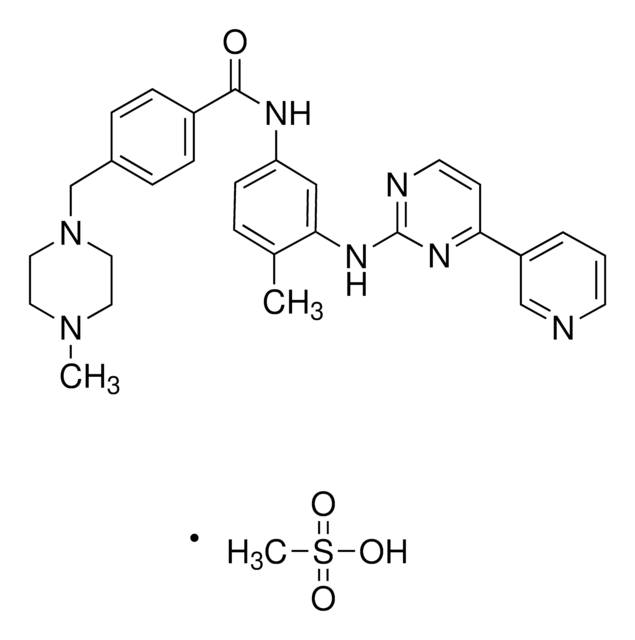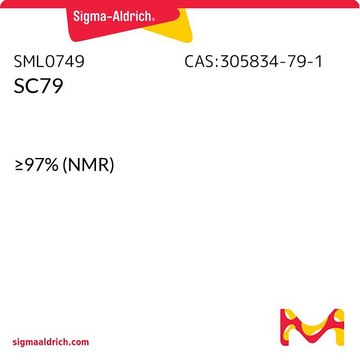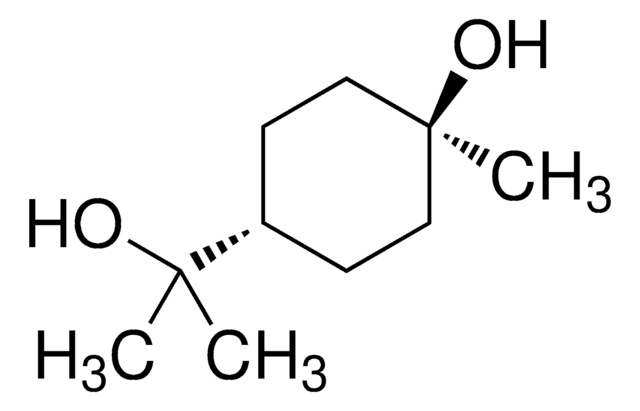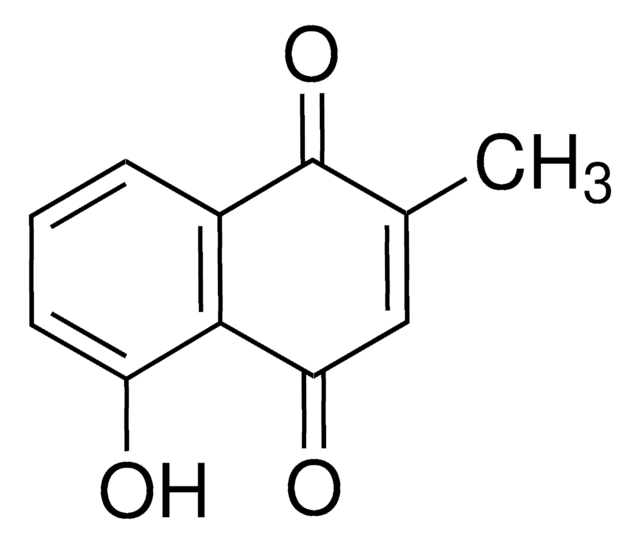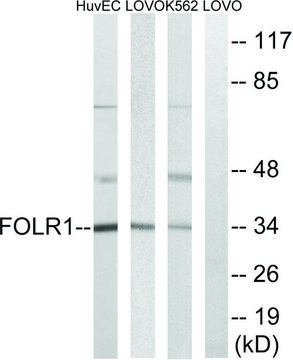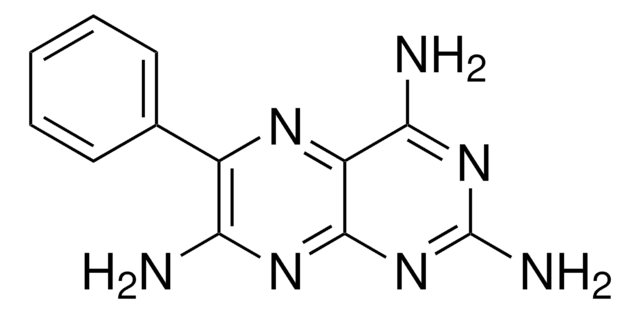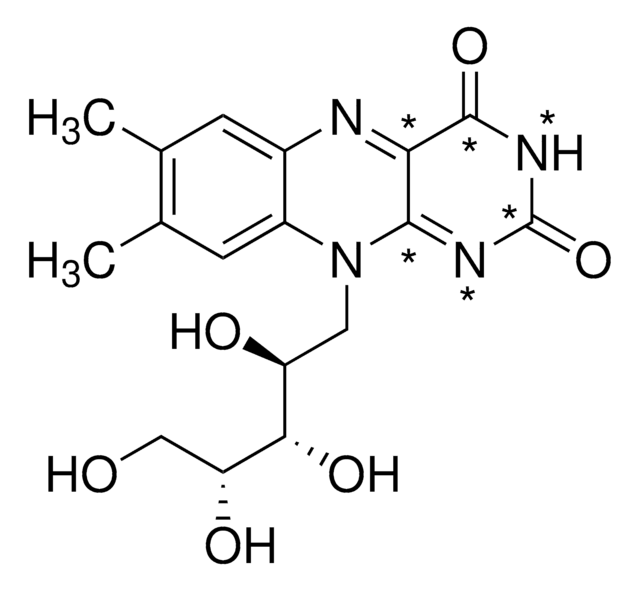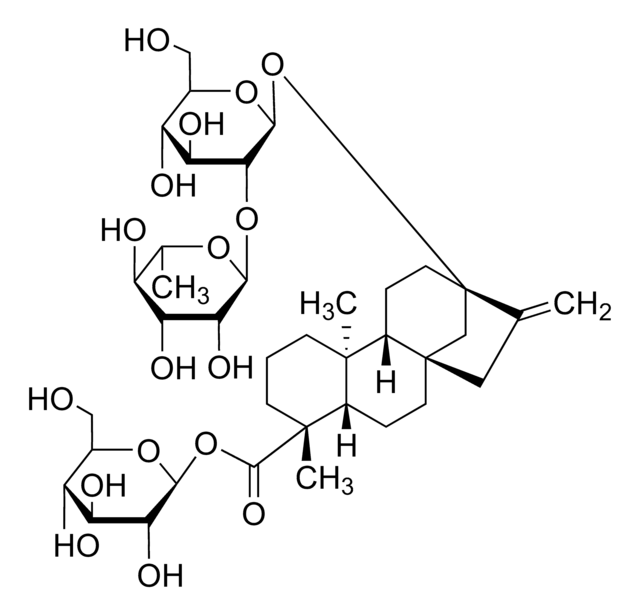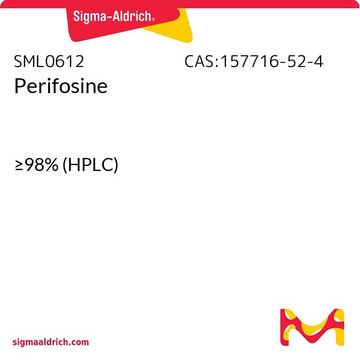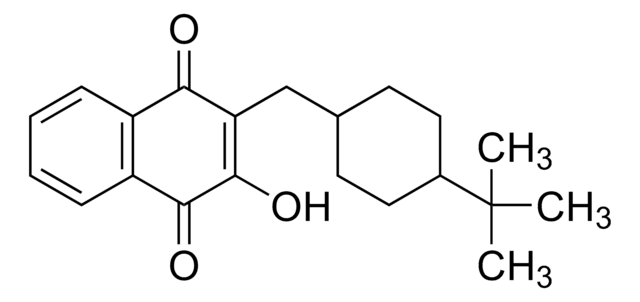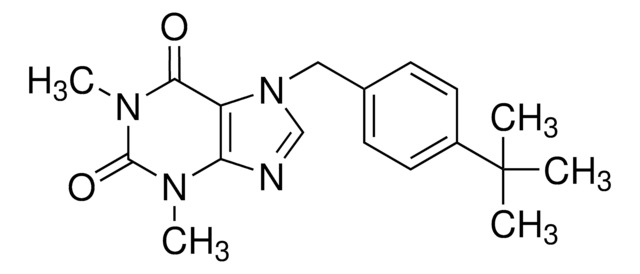SML0612
Perifosine
≥98% (HPLC)
Synonym(s):
4-[[Hydroxy(octadecyloxy)phosphinyl]oxy]-1,1-dimethyl-piperidinium inner salt, KRX-0401, Octadecyl-(1,1-dimethyl-4-piperidylio) phosphate
About This Item
Recommended Products
Assay
≥98% (HPLC)
form
powder
color
white to beige
solubility
H2O: 10 mg/mL, clear
shipped in
wet ice
storage temp.
−20°C
SMILES string
[P](=O)([O-])(OC1CC[N+](CC1)(C)C)OCCCCCCCCCCCCCCCCCC
InChI
1S/C25H52NO4P/c1-4-5-6-7-8-9-10-11-12-13-14-15-16-17-18-19-24-29-31(27,28)30-25-20-22-26(2,3)23-21-25/h25H,4-24H2,1-3H3
InChI key
SZFPYBIJACMNJV-UHFFFAOYSA-N
1 of 4
This Item | SML1662 | S4257 | SML1142 |
|---|---|---|---|
| form powder | form powder | form powder | form powder |
| Quality Level 100 | Quality Level 200 | Quality Level 200 | Quality Level 100 |
| storage temp. −20°C | storage temp. 2-8°C | storage temp. −20°C | storage temp. 2-8°C |
| solubility H2O: 10 mg/mL, clear | solubility DMSO: soluble, chloroform: soluble | solubility chloroform/methanol (2:1): complete 10 mg/ml, clear to slightly hazy, colorless to light yellow | solubility DMSO: 10 mg/mL, clear |
| shipped in wet ice | shipped in - | shipped in - | shipped in - |
Application
Biochem/physiol Actions
Storage Class Code
11 - Combustible Solids
WGK
WGK 3
Flash Point(F)
Not applicable
Flash Point(C)
Not applicable
Regulatory Information
Choose from one of the most recent versions:
Certificates of Analysis (COA)
Don't see the Right Version?
If you require a particular version, you can look up a specific certificate by the Lot or Batch number.
Already Own This Product?
Find documentation for the products that you have recently purchased in the Document Library.
Protocols
We offer many products related to PKB/Akt for your research needs.
Our team of scientists has experience in all areas of research including Life Science, Material Science, Chemical Synthesis, Chromatography, Analytical and many others.
Contact Technical Service